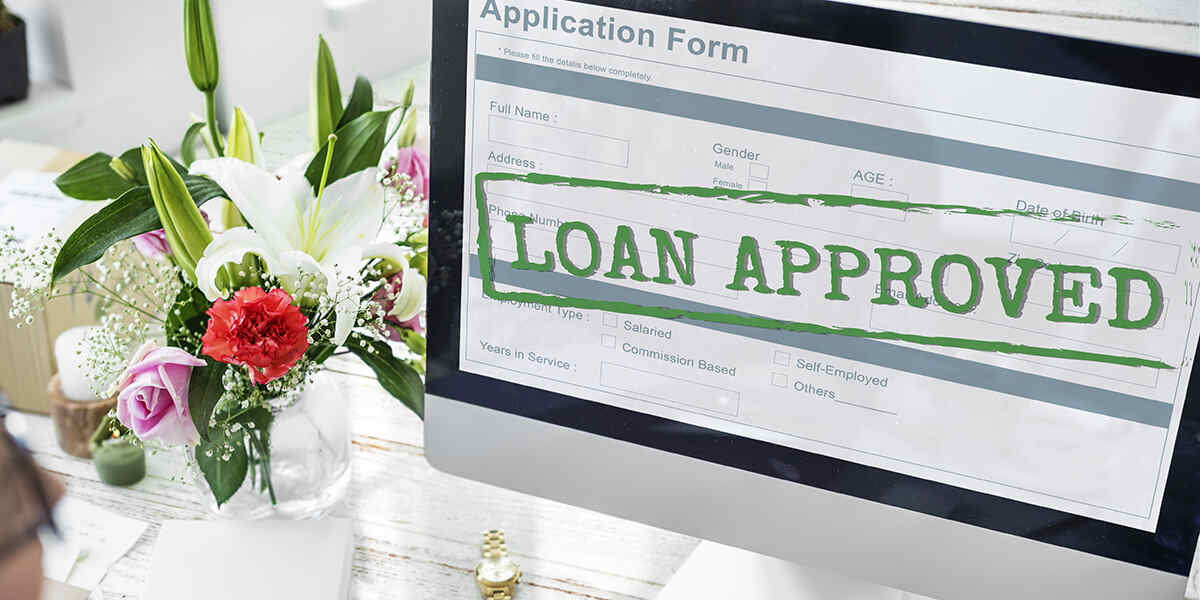Purchasing a home in Texas can be thrilling, yet it typically involves various expenses. A potential solution to ease this financial strain is the no-closing-cost mortgage. With this loan type, there are no upfront closing costs when buying or refinancing a home. Instead, the lender pays these fees, and you repay them later via a higher interest rate. This guide will assist you in understanding how no-closing-cost mortgages function and whether they may be suitable for your situation.
Understanding No Closing Cost Mortgages
When considering the benefits of a no-closing-cost mortgage, a homebuyer examines closing costs, interest rates, and how these factors influence their financial decisions. Lenders typically recover costs by increasing the interest rate or including closing costs in the loan amount, resulting in a zero-closing-cost mortgage. For a first-time homebuyer, saving money upfront can be appealing, but a higher interest rate may affect home equity over time.
If individuals intend to remain in their home for a longer mortgage term, the increased monthly payment could lead to higher overall payments compared to a traditional mortgage with upfront costs. Homebuyer programs are available to help ease these challenges, allowing first-time buyers to access necessary funds without being burdened by mortgage fees. Clear communication from lenders regarding all costs and fees, such as title insurance and underwriting fees, is important for making informed financial decisions.
A detailed loan estimate before commitment can clarify potential obligations in the future. Consulting a real estate agent may also assist individuals in navigating these options effectively.
Benefits of No Closing Cost Mortgage Texas
A no-closing-cost mortgage in Texas offers financial advantages to homebuyers by removing the immediate burden of paying upfront fees. Instead of paying closing costs, like title insurance and underwriting fees, these costs can be added to the loan amount or compensated through a higher interest rate. This approach allows first-time homebuyers to keep necessary funds for down payments or other expenses, streamlining their financial decisions.
Additionally, this type of loan supports transparency, helping buyers manage their monthly mortgage payments without stressing about large upfront cash requirements. For those considering refinancing or home buyer programs, a no-closing-cost loan simplifies the process significantly. It reduces the complexities associated with costs and fees, making it easier for them to engage with mortgage lenders and real estate agents while focusing on their overall mortgage term and potential home equity.
By choosing this option, individuals can concentrate on their new home without feeling burdened by traditional mortgage expenses.
Common Types of No Closing Cost Mortgages
VA Loans
VA loans offer distinct benefits for qualified applicants, such as zero down payment options that are advantageous for first-time homebuyers. This allows the loan amount to cover the home’s full price, easing the financial burden on buyers.
Additionally, VA loans often eliminate closing costs, helping homebuyers avoid up-front mortgage fees like title insurance and underwriting fees. Instead of paying these costs upfront, they may be included in the loan, although this can lead to a higher interest rate over time. The underwriting process for VA loans tends to be more lenient compared to conventional mortgages, focusing on the borrower’s ability to repay rather than solely on income and credit scores. Those eligible include veterans, active-duty service members, and surviving spouses, with proof of military service required. Programs are also available to help these individuals navigate the mortgage application process effectively, promoting transparency and accuracy.
FHA Loans
FHA loans stand out because they enable home buyers to secure a mortgage with a lower down payment and flexible credit standards. This makes them suitable for first-time buyers who may not have sufficient funds for a conventional mortgage.
Additionally, FHA loans require mortgage insurance premiums, which can increase the overall loan amount and monthly payments. For many, opting for a no-closing-cost mortgage helps alleviate the burden of upfront costs, allowing buyers to incorporate these expenses into their loan total. However, this option results in a higher interest rate throughout the loan duration. Clear communication with lenders is necessary to grasp all costs and fees involved, such as underwriting charges or title insurance. Home buyer programs can also provide assistance in covering closing-related expenses. Buyers should consider how these elements affect their home equity and long-term financial choices.
Collaborating with an independent real estate agent will help them find the best mortgage lenders and fully understand their loan estimate during the application process.
Conventional Loans
Conventional loans are a popular option for many homebuyers. These loans typically require a down payment ranging from 3% to 20%, while closing costs can vary from 2% to 6% of the loan amount. First-time homebuyers might find programs available to assist with some mortgage fees. Alternatively, a no-closing-cost mortgage option permits buyers to incorporate closing costs into a more expensive loan, leading to a higher interest rate over time.
This can impact monthly mortgage payments and home equity, as a larger loan amount results in a reduced initial ownership stake. Lenders evaluate several factors, such as credit score, income, and debts, when assessing mortgage applications. With a strict editorial policy focused on accuracy, homebuyers can make better financial decisions by reviewing their options among various mortgage lenders. A loan estimate can help reveal potential underwriting fees and the total costs involved.
How No Closing Cost Mortgages Work
A no-closing-cost mortgage allows homebuyers to skip upfront fees like title insurance and underwriting fees by adding closing costs to the loan amount. Lenders offset this by charging a higher interest rate throughout the mortgage term.
For example, with a zero-closing-cost mortgage, the borrower’s monthly payment will reflect this increased interest rate, which can affect home equity since it starts from a larger loan amount. This option is appealing to first-time homebuyers and those with limited funds, such as participants in home buyer programs, particularly if they plan to stay in the home for a shorter time. While traditional mortgages require paying closing costs upfront, no-closing-cost loans offer more flexibility for buyers who might have financial concerns at closing. By reviewing details from their loan estimate and understanding the impact of higher mortgage fees, borrowers can make more informed financial choices.
Consulting with experienced mortgage lenders and real estate agents can also enhance transparency during the mortgage application process.
Eligibility Criteria for No Closing Cost Mortgage Texas
To qualify for a no-closing-cost mortgage in Texas, applicants generally need to demonstrate enough income and show responsible financial behavior. Lenders typically seek a solid debt-to-income ratio, reflecting a borrower’s ability to manage monthly mortgage payments alongside other financial commitments.
Additionally, potential homebuyers, particularly first-time buyers, should note that most lenders set a minimum credit score for these loans. Certain types of properties, like single-family homes, usually qualify, while investment properties might not. The location of the property can also impact eligibility, as various homebuyer programs may have specific restrictions. Understanding mortgage fees and costs, including title insurance and underwriting fees, is important for making informed financial choices.
Therefore, those interested in a no-closing-cost loan should communicate effectively with their real estate agent and request a detailed loan estimate to understand the financial obligations involved throughout the mortgage term. This openness allows homebuyers to make wiser financial choices in a competitive market.
Finding Lenders Offering No Closing Cost Mortgages
To find lenders offering no closing cost mortgages in Texas, individuals should start by comparing multiple lenders to gather various loan estimates. This helps identify lenders with favorable terms, which can include lower fees or competitive interest rates. Mortgage calculators can enhance understanding by allowing them to assess how a no-closing-cost loan will impact their monthly mortgage payment and total costs over the loan term.
Evaluating lender reputations is important; borrowers should look for independent reviews and testimonials from other homebuyers or consult with a real estate agent for recommendations. First-time homebuyers may also explore specific home buyer programs that cater to their needs. Clarity in services and a lender’s adherence to a strong editorial policy are good indicators of trustworthy information.
Additionally, individuals can research the best mortgage lenders online, focusing on those who highlight no-closing-cost loans and provide accurate content about available lending products, including any relevant mortgage fees, such as title insurance and underwriting fees.
Potential Drawbacks of No Closing Cost Mortgages
A no-closing-cost mortgage can lower upfront payments for homebuyers, especially first-time buyers who may have difficulty gathering the necessary funds. However, this option often results in a higher loan amount and interest rate.
For example, including closing costs in the loan increases monthly payments and decreases home equity. Over the mortgage term, this can lead to considerably higher total costs compared to a traditional mortgage, where closing costs are settled at the beginning as interest builds on the larger principal. Borrowers may encounter risks if they do not fully grasp underwriting fees, title insurance costs, and other mortgage fees that could lead to surprises during the application or loan estimate process. Those who depend entirely on zero-closing-cost mortgages without consulting independent sources or considering home buyer programs might make less informed financial choices.
Clarity about terms and conditions can help avoid issues, making it important for borrowers to evaluate their options among top mortgage lenders carefully.
Comparing Closing Costs and No Closing Cost Options
When borrowers compare the total costs of traditional closing expenses and no-closing-cost mortgage options, they should consider factors like the higher interest rate of a no-closing-cost loan and how it affects overall financial decisions. A no-closing-cost mortgage often has a higher interest rate, leading to larger monthly payments over the loan’s duration.
For example, a first-time homebuyer may prefer a zero-closing-cost mortgage to avoid upfront expenses like title insurance and underwriting fees. However, this means they will build home equity more slowly due to the increased loan amount. If the borrower plans to stay in their home for a shorter mortgage term or cannot cover significant closing costs, a no-closing-cost option may be more beneficial. This method allows for easier cost management and ensures necessary funds are available for other expenses, making it a smarter financial choice in specific scenarios.
Consulting with a real estate agent can offer guidance on potential home buyer programs that assist with these financial considerations.
How to Apply for a No Closing Cost Mortgage in Texas
To apply for a no-closing-cost mortgage in Texas, the home buyer should begin by gathering necessary documents like income statements, tax returns, and debt information. This information helps establish eligibility for the desired loan amount. First-time home buyers may also want to explore programs that assist with down payments and other costs. When filling out the mortgage application, providing accurate information about personal finances is important for transparency during underwriting.
Applicants should review a loan estimate to understand the costs associated with the no-closing-cost loan, which may include a higher interest rate and potentially lower home equity at the beginning. Comparing various lenders and inquiring about their zero-closing-cost mortgage options, along with checking their listings for feedback, will aid in selecting the best mortgage lenders. This process contributes to smarter financial decisions that align with the borrower’s long-term mortgage goals.
Tips for Choosing the Right No Closing Cost Mortgage
1. Assess Your Financial Situation
Individuals should carefully review their current income, expenses, and savings to understand their overall financial health before proceeding with a no-closing-cost mortgage. Knowing their financial situation aids in making informed decisions regarding mortgage fees, allowing them to evaluate home buyer programs or any available resources.
They should also be aware of their credit score, as a higher score can provide better options for a no-closing-cost loan, directly impacting the interest rate and the loan amount they can secure.
Additionally, it’s important for individuals to reflect on their long-term financial goals. Understanding how a zero-closing-cost mortgage can affect their home equity and future monthly mortgage payments is significant. If they plan to stay in their home for only a few years, a higher interest rate on a no-closing-cost mortgage may make sense. Working with a real estate agent can assist in navigating these factors, ensuring transparency and guiding them through the mortgage application process while considering costs and fees.
2. Understand the Long-Term Costs
Choosing a no-closing-cost mortgage instead of a traditional mortgage means the homebuyer may face higher long-term costs and fees. While a no-closing-cost loan allows for fewer funds needed upfront, it typically comes with a higher interest rate. This elevated interest can lead to larger monthly mortgage payments and, over the mortgage term, a significant amount paid in interest, greatly affecting the overall loan amount.
Additionally, for first-time homebuyers or those refinancing, the higher costs influence home equity. If a homeowner rolls closing costs into the loan, it might hinder their ability to build equity early on, making it harder to access benefits from home equity for future financial decisions. Understanding these implications is important. Transparency while reviewing loan estimates and working with a real estate agent can ensure homebuyers make informed financial decisions.
They should compare various mortgage lenders to evaluate potential long-term impacts on equity, interest rates, and monthly costs associated with mortgage fees and underwriting fees.
3. Research Various Lenders
When evaluating lenders that offer no-closing-cost mortgages, borrowers should consider the specific costs and fees associated with each loan option. This includes understanding how closing costs, such as title insurance and underwriting fees, are handled. Borrowers should also look at the loan amount and whether they are financing these costs. Interest rates are important, as higher interest rates on a no-closing-cost loan can lead to larger monthly mortgage payments over the mortgage term.
Borrowers can seek transparency in loan estimates and reviews from first-time homebuyers or real estate agents to gauge a lender’s reputation. This research helps identify the best mortgage lenders who provide accurate content and maintain a strict editorial policy.
Additionally, comparing terms and conditions, such as how lenders treat closing costs within zero-closing-cost mortgages, can reveal significant differences. Understanding the implications for long-term home equity and the necessary funds needed for a down payment is also important for smarter financial decisions.
FAQ
What are the no-closing-cost mortgage options in Texas?
No closing cost mortgage options in Texas include lender credit mortgages, where the lender covers closing costs in exchange for a higher interest rate, or rolling costs into the loan. Consider FHA loans or VA loans, which may offer low to no closing costs depending on specific criteria.
How do no-closing cost mortgages work?
No closing cost mortgages allow you to finance closing costs into your loan or pay a higher interest rate to cover them. For example, instead of paying $5,000 upfront, your loan amount can increase, or your rate may rise by 0.5% to 1%. Always calculate long-term costs.
Are no closing cost mortgage options available for all types of loans in Texas?
No closing cost mortgage options are not universally available for all types of loans in Texas. However, you can explore options like VA loans or negotiate with lenders for conventional mortgages. Always compare offers to find the best deal that fits your needs.
What are the benefits and drawbacks of choosing a no-closing-cost mortgage in Texas?
Benefits of a no closing cost mortgage include immediate savings and easier affordability, ideal for those short on cash. However, drawbacks include potentially higher interest rates and overall costs in the long run. Consider refinancing later for better terms if your financial situation improves.
Is it possible to negotiate closing costs with lenders in Texas even with no closing cost options?
Yes, you can negotiate closing costs with lenders in Texas. Ask for a discount on lender fees or request the lender to cover certain costs in exchange for a slightly higher interest rate. Always compare offers to ensure you’re getting the best deal.
Learn about no-closing cost mortgage options in Texas with Champions Mortgage. Our team can help you explore loans that minimize upfront expenses, making your home-buying process more affordable. Reach out to us today to see how you can benefit from these cost-saving options.







